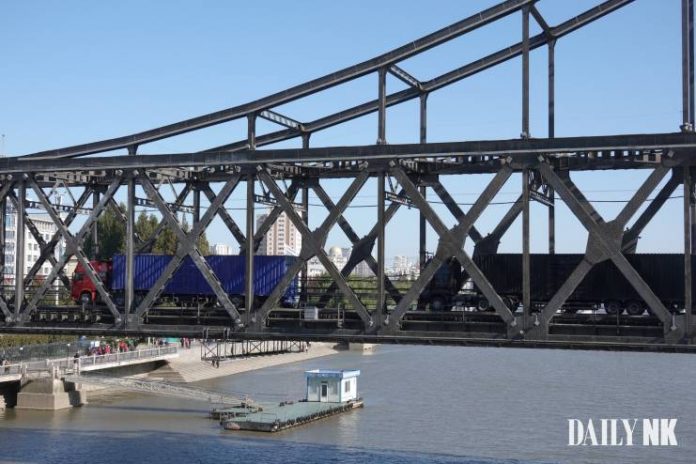
After rising for three months, North Korea’s KPW-RMB market exchange rate has recently plummeted due to falling expectations about the full-scale restart of trade with China.
According to Daily NK’s regular survey of North Korean market prices, the yuan was trading at KPW 1,230 in the border city of Sinuiju, North Pyongan Province, on June 25. That is 8.9% less than in the last survey two weeks ago on June 11, when it was trading at KPW 1,350.
The KPW-RMB plummeted in Yanggang Province’s city of Hyesan, too. The yuan was trading at KPW 1,250 in Hyesan as of June 25, 6% less than it was on June 11, when it was trading at KPW 1,330.
The KPW-RMB rate experienced a similar drop in the capital Pyongyang.
It is the first time this year that the KPW-RMB rate fell by 6-8% across all regions in North Korea.
The yuan was trading at KPW 1,200-1,250 in mid-January 2020, just prior to North Korea’s closure of the border to block COVID-19. The yuan fell below KPW 1,000 in November of the same year and even hit KPW 500 in June 2021.
The collapse of the KPW-RMB rate during the border closure was linked to falling domestic expectations regarding the reopening of the border and the restart of trade.
However, the KPW-RMB market rate began slowly climbing from the second half of last year, recovering to over KPW 1,100 last December, when trade with China greatly increased. This March, it rose to its pre-COVID level of KPW 1,200, with the yuan strengthening as of late.
The recent collapse of the KPW-RMB rate, which had been climbing on the back of expanded trade with China, appears to be mostly the result of falling demand for the yuan as expectations for a full-scale restart of trade diminish in border regions such as Yanggang and North Hamgyong provinces.
“Many people bought yuan in the spring because they expected trade to reopen, but trade didn’t restart after they said it would, so now nobody is buying yuan,” a source in Yanggang Province said, speaking on condition of anonymity for security reasons. “In short, the rate is falling because nobody wants any yuan.”
Another source in North Pyongan Province told Daily NK that the authorities “gathered trading companies together to hold training sessions and lectures on trading rules as if trade would soon restart, so people are just frustrated because trade never restarted. Not even trading companies expect trade to restart now.”
KPW-USD market exchange rates continue to climb
Meanwhle, KPW-USD market exchange rates are still rising. The greenback was trading at KPW 8,330 in Pyongyang as of June 25, 0.4% higher than it was on June 11, when it was trading at KPW 8,300. The KPW-USD rate remained unchanged in Sinuiju from two weeks ago.
However, in Hyesan, the dollar was trading at KPW 8,470, 2.7% higher than it was in the previous survey, when it was trading at KPW 8,250.
Prior to COVID-19, major trading companies in Hyesan typically used yuan for payments, but with the recent absence of direct trade through the city, local trading companies are instead participating in state-led trade through Nampo or Sinuiju.
One of Daily NK’s sources said that demand for the greenback has been climbing in Hyesan as of late, particularly among major trading companies, due to the fact that state-led trade is conducted mostly in dollars.
Translated by David Black. Edited by Robert Lauler.
Daily NK works with a network of sources who live inside North Korea, China and elsewhere. Their identities remain anonymous due to security concerns. More information about Daily NK’s reporting partner network and information gathering activities can be found on our FAQ page here.
Please direct any comments or questions about this article to dailynkenglish@uni-media.net.


















